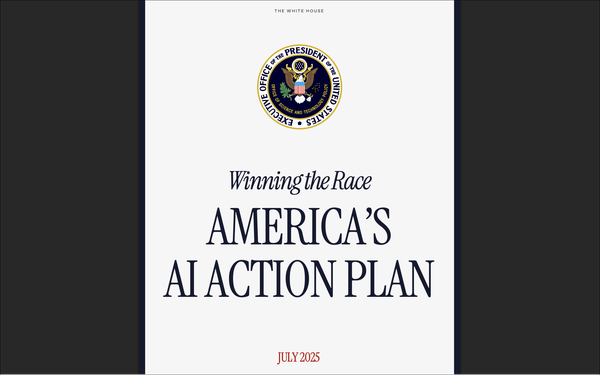
The White House on Wednesday released its AI Action Plan, a set of proposals developed by the Trump administration to meet the United States' goal
for dominance in artificial intelligence (AI). Here is what we know so far.
The 90 federal actions focus on three areas: increasing private-sector innovation, expanding AI-related
infrastructure and exporting American AI. The goal is set on "winning the AI race" against global competitors like China.
“The United States must also drive adoption of American AI
systems, computing hardware, and standards throughout the world,” according to the document. “America currently is the global leader on data center construction, computing hardware
performance, and models.”
advertisement
advertisement
Leveraging the U.S.’s advantage as a global alliance is only one focus. The other is to prevent adversaries from “free riding” on U.S.
innovations and investments.
Positive and negative regulations are held within the plan. Technology companies have asked for deregulation, which they say will benefit advertisers.
The
plan emphasizes the removal of what it considers onerous regulations and red tape. It also could reduce barriers to AI adoption, although many are concerned about the potential for undermining data
and physical consumer protection.
Others are concerned that the plan will prioritize AI development over consumer safeguards, and could lead to increased skepticism toward and distrust of
AI-powered advertising, potentially impacting ad effectiveness and brand reputation.
“This is an AI plan written by Big Tech,” stated Public Citizen co-president Robert Weissman.
“The Trump AI plan manages both to buy into the AI over-hype and simultaneously put America on a path to a weaker AI landscape — and a weaker country overall."
Weissman is
looking to gain AI for social good, rather than just corporate profit.
“If AI delivers on even a fraction of its technological promise, then it is vital we place guardrails to ensure
basic norms of truthfulness are maintained, the climate crisis is not supercharged, people’s work is not appropriated by Big Tech, discrimination is intensified, wealth is not further
concentrated, costs are imputed to the AI companies not their victims and catastrophic risks are avoided.”
However, some say looser regulations could make it easier and faster for
advertisers to experiment with and integrate new AI technologies into their campaigns, potentially accelerating the deployment of AI-powered tools for tasks like ad placement, bidding, and
optimization.
This plan favors deregulation, but a shift in political administrations could lead to a renewed focus on consumer protection and stricter regulations for AI in advertising,
creating a roller coaster for businesses.